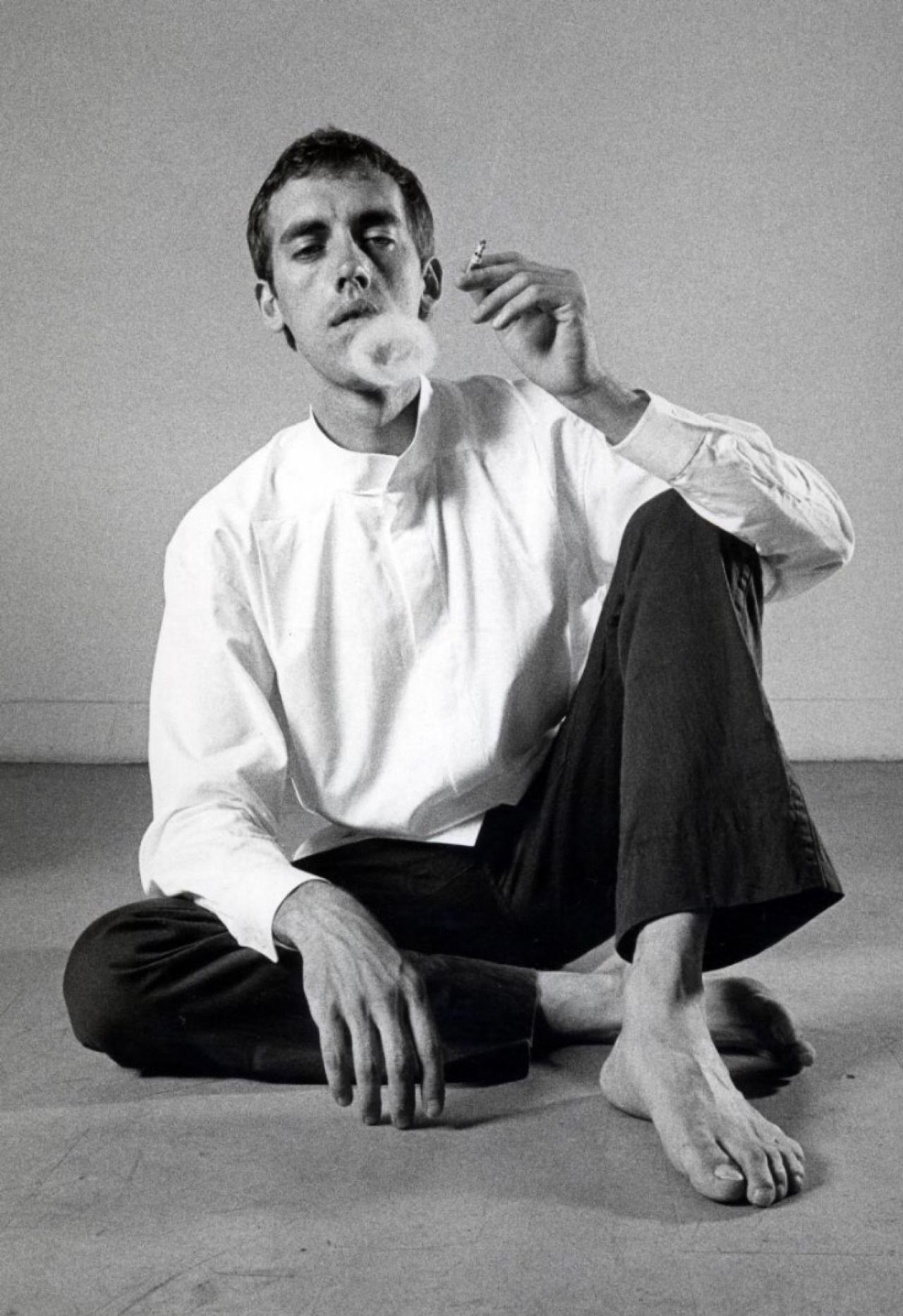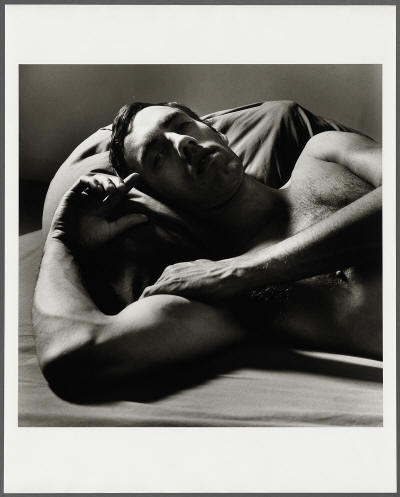 David Michael Wojnarowicz (September 14, 1954 – July 22, 1992) was an
American painter, photographer, writer, filmmaker, performance artist,
songwriter/recording artist and AIDS activist prominent in the New York City
art world.[2]
David Michael Wojnarowicz (September 14, 1954 – July 22, 1992) was an
American painter, photographer, writer, filmmaker, performance artist,
songwriter/recording artist and AIDS activist prominent in the New York City
art world.[2]
Queer Places:
High School of Performing Arts, 120 W 46th St, New York, NY 10036, Stati Uniti
The High School of Music & Art, 443 W 135th St, New York, NY 10031, Stati Uniti
Louis N. Jaffe Art Theater Building, 189 2nd Ave, New York, NY 10003, Stati Uniti
Miller Run Cemetery, Weedville, PA 15868, Stati Uniti
 David Michael Wojnarowicz (September 14, 1954 – July 22, 1992) was an
American painter, photographer, writer, filmmaker, performance artist,
songwriter/recording artist and AIDS activist prominent in the New York City
art world.[2]
David Michael Wojnarowicz (September 14, 1954 – July 22, 1992) was an
American painter, photographer, writer, filmmaker, performance artist,
songwriter/recording artist and AIDS activist prominent in the New York City
art world.[2]
Wojnarowicz was born in Red Bank, New Jersey, and later lived most of his life with his mother in New York City, where he attended the High School of Performing Arts for a brief period. His parents divorced and then disappeared when he was 2, leaving him to a succession of temporary homes and often abusive relationships.[3] He was a victim of childhood abuse and during his teenage years was a street hustler. He graduated from the High School of Music and Art in Manhattan.[1]
After a period outside New York he returned in the late 1970s and quickly emerged as one of the most prominent and prolific members of an avant-garde wing that mixed media, and which made and used graffiti and street art. His first recognition came from stencils of houses afire that appeared on the exposed sides of buildings in the East Village.
He made super-8 films, such as Heroin, Beautiful People with Jesse Hultberg, began a photographic series of Arthur Rimbaud, did stencil work, collaborated in the band 3 Teens Kill 4 who released the independent EP No Motive in 1982. He exhibited his work in well-known East Village galleries, notably Civilian Warfare, Ground Zero Gallery NY, Public Illumination Picture Gallery, Gracie Mansion and Hal Bromm.
Wojnarowicz was also connected to other prolific artists of the time, appearing in or collaborating on works with artists like Nan Goldin, Peter Hujar, Luis Frangella, Karen Finley, Kiki Smith, John Fekner, Richard Kern, James Romberger, Marguerite Van Cook, Ben Neill, Marion Scemama and Phil Zwickler. In 1987 his longtime mentor and lover, the photographer Peter Hujar, died of AIDS, and Wojnarowicz himself learned that he was HIV-positive.[3] Hujar's death moved Wojnarowicz's work into much more explicit activism and political content, notably around the injustices, social and legal, inherent in the response to the AIDS epidemic.[1]

Verso: stamp, "The Estate of Peter Hujar, Stephen Koch Executor, Printed by the Artist"; stamp, "Copyright 1987, The Estate of Peter Hujar, Not to be Reproduced Without Written Permission from the Estate"; stamp, "From the Estate #"; in pencil, "935-2-9"; in pencil, "#4"; signed in pencil, "Stephen Koch"; in pencil, "EPH 229-4"; in pencil, "David Wojnarowicz Reclining II, 1981"; in pencil, HUJ 021".
IIn 1985, he was included in the Whitney Biennial's so-called Graffiti Show.. In the 1990s, he sued and successfully issued an injunction against Donald Wildmon and the American Family Association on the grounds that Wojnarowicz's work had been copied and distorted in violation of the New York Artists' Authorship Rights Act.[4]
His works include: Untitled (One Day This Kid...); Untitled (Buffalo); Water; Birth of Language II; Untitled (Shark), Untitled (Peter Hujar); Tuna; Peter Hujar Dreaming/Yukio Mishima: St. Sebastian; Delta Towels; True Myth (Domino Sugar); Something From Sleep II; Untitled (Face in Dirt); and I Feel a Vague Nausea among others.
He was also the author of several successful books, often about political and social issues of the 1980s relating to the AIDS epidemic. One of his bestsellers, Close to the Knives: A Memoir of Disintegration, is an autobiography made up of creative writing discussing topics such as his troubled childhood, he himself becoming one of the most renowned artists of his time in New York City, and being diagnosed with AIDS himself. While his artwork was his main source of expression he used such books and other media to speak to the public about important controversies of the time.[5]
Wojnarowicz died in his Manhattan home on the night of July 22, 1992, from what his companion Tom Rauffenbart confirmed was AIDS.[1] After his death, photographer and artist Zoe Leonard, who was a friend of Wojnarowicz, exhibited a work inspired by him, entitled "Strange Fruit (for David)".[6]
WWojnarowicz has served as an inspiration to many artists. Among those who have credited him as an influence are Zoe Leonard, Victoria Yee Howe, Matt Wolf, Emily Roysdon, Henrik Olesen, Mike Estabrook, and Carrie Mae Weems.[7]
In Spring 2011, P.P.O.W. gallery showed Spirituality,, an exhibition of Wojnarowicz's drawings, photographs, videos, collages, and personal notebooks; in a review in The Brooklyn Rail, Kara L. Rooney called the show "meticulously researched and commendably curated from a wide array of sources, ... a mini-retrospective, providing context and clues for Wojnarowicz's often elusive, sometimes dangerous, and always brutally honest work."[8]
A major retrospective, David Wojnarowicz: History Keeps Me Awake at Night,, has been announced for exhibition at the Whitney Museum of American Art in spring 2018.[9] It is co-curated by the Whitney's David Kiehl and art historian David Breslin.
OOn October 11, 1992, David Robinson received wide media attention when he dumped the ashes of his partner, Warren Krause, on the grounds of the White House as a protest against President George H.W. Bush’s inaction in fighting AIDS. Robinson reported that this action was inspired by Wojnarowicz's 1991 memoir Close to the Knives, which imagined "what it would be like if, each time a lover, friend or stranger died of this disease, their friends, lovers or neighbors would take the dead body and drive with it in a car a hundred miles an hour to Washington DC and blast through the gates of the White House and come to a screeching halt before the entrance and dump their lifeless form on the front steps."[54][55]
My published books: